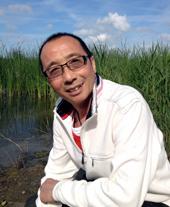3-dages seminar med Dr. Li Jie
1. dag: Puls-undervisning. Puls-tagning og puls-diagnostik som beskrevet i Nan Jing.
2. dag: Meridianerne og punkternes natur.
3. dag: Sygdomme og sygdoms-mekanismer. Teori og kliniske eksempler.
Kurset er forbeholdt uddannede akupunktører og foregår på engelsk. Der vil være oversættelse efter behov.
English course description
Background
The 81 difficult questions of the Nan Jing is one of the most important classical works in Chinese medical history and will lay the foundation for this course along with selected chapters from Huang Di nei Jing – Ling Shu.
Goal of this course
The goal of this course is to deeply understand and study this classical work for today necessary for a good TCM practitioner or a qualified TCM teacher and apply these classical works in our daily practise.
Content of the course
Nan Jing comprehends six parts: Pulse-ology, meridian-ology, Zang-Fu theory, pathological mechanisms of diseases, the nature of acupuncture points and needling techniques. Dr. Li will speak of these areas during the 3 days and the course will contain a combination of practise, theory and practical demonstrations with live patients.
The following important parts will be selected and deeply discussed:
Day one. Pulse-ology
From issues 1 – 21 of the Nan Jing: The theory of the pulse, pulse images, pulse techniques:
1. The yin yang pulse system: Fu Chen, Cun Chi and Mai Xiang (natures of pulses)
2. Zang Fu natures relating to the pulses: Wu Xing (five phases) relating to Nan Jing pulse mechanisms; the pathological mechanisms of the pulse and the relation of later developed 28 pulses will be discussed and trained in practice.
Day two. Meridian-ology
From issues 22 – 29 of the Nan Jing:
1. This will combine with the chapters 10 and 11 of the Ling Shu and Qi Jing Ba Mai Kao (Li Shi Zhen) in order to deeply study classical meridian-ology and its related pathological mechanisms, and to understand the basic theory of making acupuncture formulas. Many unclear concepts, such as Qi Jing Ba Mai will be clarified in theory and clinical application.
2. From Issues 62 – 68: This will combine with Ling Shu Chapter 1 and 2 to guide us to deeply understand the original description of the natures of the 12 jing well points, five Shu, Yuan source, Front Mu, Back Shu, 15 Luo, and ba hui points. Combinations with the theories of four streets, roots-note and four sea of meridian-ology will be explained.
The use of these points in acupuncture formulas and in clinical application will be discussed.
Day three. Pathological mechanisms of diseases
Issue 48 till 61 of the Nan Jing:
1. Combine with Huang Di Nei Jing to understand the transforming mechanisms of diseases
2. Discuss Nan Jing diseases, such as Shan Han diseases, Ji Ju (masses and tumors), Xie Xie (Diarrhea related diseases), Dian Kuang (mental disorders), Tou Tong and Xin Tong (headache and heart pain related diseases), their related today’s miscellaneous diseases and treatment in practices.

